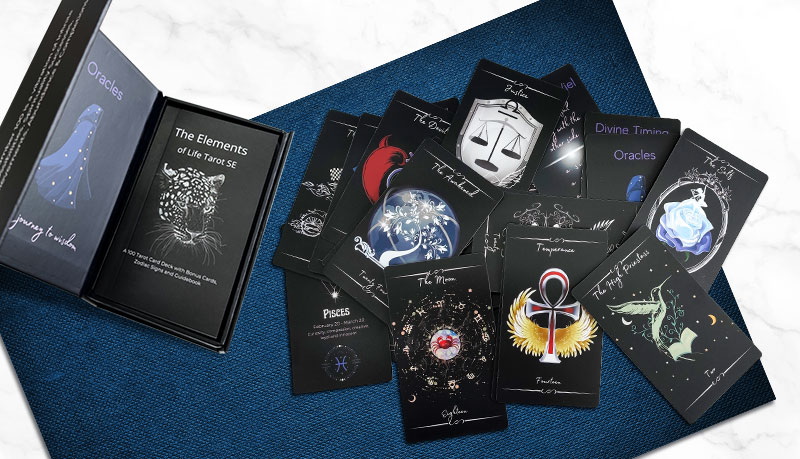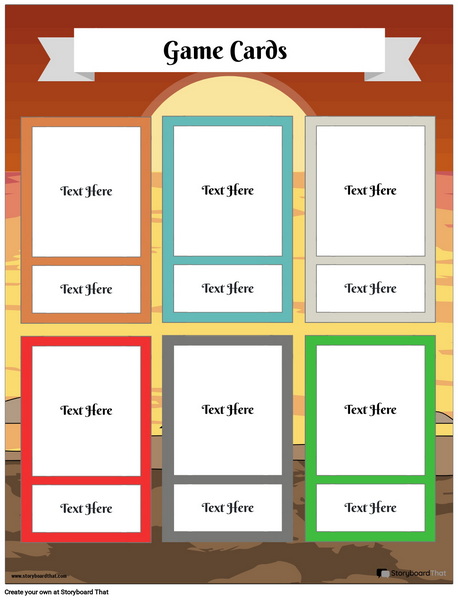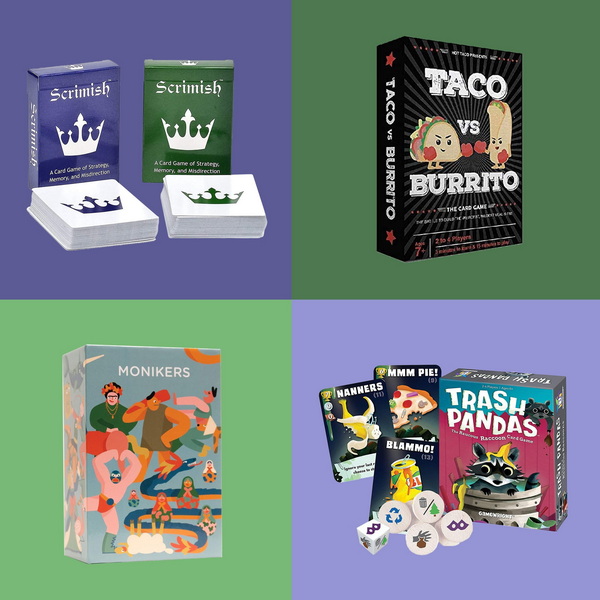Content Menu
● Understanding the Core Concept
● Defining Game Mechanics
● Designing Card Layout
● Balancing Complexity and Simplicity
● Playtesting
● Production Considerations
● Marketing Your Card Game
● Expanding Gameplay Mechanics
● Visual Design Elements
● Conclusion
● Questions & Answers
>> 1. What are essential elements in card design?
>> 2. How do I determine win conditions in my card game?
>> 3. What types of cards should I include in my game?
>> 4. Why is playtesting important?
>> 5. What software can I use for designing my cards?
● Citations:
Designing cards for a card game is a multifaceted process that combines creativity, strategic thinking, and an understanding of game mechanics. Whether you are creating a trading card game (TCG), a deck-building game, or a simple card game for casual play, there are essential steps and considerations involved in the design process. This article will guide you through the intricacies of designing cards for a card game, covering everything from conceptualization to final production.

Understanding the Core Concept
Before you start designing cards, it's crucial to define the core concept of your card game. This includes:
- Theme: What is the overarching theme of your game? Is it fantasy, sci-fi, historical, or something else? The theme will influence the artwork and mechanics of your cards.
- Target Audience: Who will be playing your game? Understanding your audience helps tailor the complexity and style of your cards.
- Game Type: Decide whether you want to create a competitive game (like Magic: The Gathering), a cooperative game (like Pandemic), or a casual party game (like Cards Against Humanity). Each type has different requirements for card design.
- Narrative Elements: Consider incorporating narrative elements that can enhance player engagement. A well-crafted backstory can provide context for the cards and make gameplay more immersive.
Defining Game Mechanics
The mechanics of your game are vital to its success. Here are some key aspects to consider:
- Win Conditions: Clearly define how players win the game. This could involve accumulating points, eliminating opponents, or completing specific objectives.
- Card Types: Determine the types of cards in your game. Common categories include:
- Character Cards: Represent players or avatars.
- Action Cards: Allow players to perform specific actions.
- Item Cards: Provide players with tools or enhancements.
- Event Cards: Trigger specific events that affect gameplay.
- Resource Cards: Represent materials or currencies required to play other cards or perform actions.
- Interactions: Consider how cards will interact with each other. This could involve synergies, counters, or combinations that enhance gameplay depth. For example, certain character cards might gain bonuses from specific item cards, creating strategic layers for players to explore.
- Game Phases: Define distinct phases of gameplay, such as drawing cards, playing actions, and resolving effects. This structure helps streamline gameplay and keeps players engaged.
Designing Card Layout
A well-designed card layout is essential for clarity and usability. Here are some tips:
- Visual Hierarchy: Ensure that important information stands out. The name of the card, its effects, and any costs should be easily readable.
- Consistent Layout: Maintain a consistent layout across all cards to help players quickly understand their options. For example, place the card name at the top, followed by an illustration, then the effects and costs at the bottom.
- Artwork and Theme Integration: Use artwork that complements the theme of your game. High-quality illustrations can significantly enhance player engagement. Collaborating with skilled artists can elevate the visual appeal of your cards.
- Iconography: Incorporate icons to represent common actions or effects. Icons can help convey information quickly without cluttering the text on the card.
Balancing Complexity and Simplicity
One of the challenges in card design is balancing complexity with accessibility:
- Ease of Understanding: While it's important to have depth in gameplay, ensure that new players can easily grasp the rules and mechanics without feeling overwhelmed.
- Strategic Depth: Incorporate layers of strategy by allowing for different play styles and decision-making processes. This keeps gameplay fresh and engaging.
- Card Limitations: Introduce limitations on how many times certain powerful abilities can be used or how many copies of a particular card can be included in a deck. This helps maintain balance within competitive environments.

Playtesting
Playtesting is an integral part of card design:
- Gather Feedback: Once you have a prototype, gather a group of players to test your game. Observe how they interact with the cards and take notes on their feedback regarding clarity, enjoyment, and balance.
- Iterate Based on Feedback: Use feedback from playtests to refine your cards. This may involve adjusting costs, reworking effects, or simplifying rules.
- Diverse Playtesting Groups: Ensure that you test with a diverse group of players who have varying levels of experience with card games. This will provide insights into how accessible your game is to different audiences.
Production Considerations
Once you are satisfied with your designs, consider how you will produce them:
- Printing Options: Choose high-quality cardstock for durability. Consider using glossy finishes for visual appeal but ensure that they don't hinder readability.
- Card Size and Shape: Standard sizes (e.g., poker size) are generally preferred as they fit well into sleeves and are easy to handle.
- Professional Design Software: Utilize graphic design software like Adobe Illustrator or Canva to create polished designs before printing.
- Prototyping Tools: Use prototyping tools like Tabletop Simulator or online platforms that allow virtual playtesting before physical production begins.
Marketing Your Card Game
If you plan to publish your card game:
- Create a Unique Selling Proposition (USP): Identify what makes your game unique compared to others on the market.
- Build an Online Presence: Use social media platforms to create buzz around your game before launch. Consider crowdfunding options if you need financial backing for production.
- Community Engagement: Engage with potential players through forums and social media groups dedicated to tabletop gaming. Building a community around your game can foster loyalty and excitement leading up to its release.
Expanding Gameplay Mechanics
To further enrich your card game's experience:
- Special Abilities: Introduce special abilities that can be activated under certain conditions or by fulfilling specific criteria during gameplay. These abilities can add layers of strategy and surprise elements for players.
- Deck Customization Options: Allow players to customize their decks by choosing from various cards before each match. This enhances replayability as players experiment with different combinations and strategies each time they play.
- Expansion Packs: Plan for future expansions that introduce new cards and mechanics based on player feedback and evolving trends in gaming culture. Expansions can keep your game fresh and encourage continued engagement from players.
Visual Design Elements
The visual aspect of your cards plays a significant role in attracting players:
- Color Schemes: Choose color schemes that reflect the mood and tone of your game's theme. Bright colors may suit light-hearted games while darker tones may fit more serious themes.
- Typography Choices: Select fonts that are easy to read but also align with the aesthetic of your theme. Avoid overly decorative fonts that may hinder readability during fast-paced gameplay.
- Card Back Design: The back design of your cards should be visually appealing but also functional—ensuring that it doesn't reveal any information about the front side when shuffled or placed face down.
Conclusion
Designing cards for a card game is an intricate process that requires careful planning, creativity, and iterative refinement through playtesting. By understanding your game's core concept, defining mechanics clearly, designing intuitive layouts, considering production aspects, expanding gameplay mechanics thoughtfully, and focusing on visual design elements, you can create engaging cards that enhance player experiences.
As you embark on this creative journey, remember that successful games often emerge from a balance between innovation and familiarity within established gaming conventions.

Questions & Answers
1. What are essential elements in card design?
Key elements include clear visual hierarchy, consistent layouts across cards, engaging artwork that reflects the theme, easily readable text for effects and costs, special abilities for added depth, and customization options for player decks.
2. How do I determine win conditions in my card game?
Win conditions should align with your game's mechanics; they can involve accumulating points, eliminating opponents, achieving specific objectives defined by card interactions or fulfilling unique conditions set by certain powerful cards.
3. What types of cards should I include in my game?
Common types include character cards (representing players), action cards (allowing specific actions), item cards (providing enhancements), event cards (triggering gameplay changes), resource cards (representing materials needed), and special ability cards (offering unique powers).
4. Why is playtesting important?
Playtesting helps identify issues with clarity, balance, enjoyment in gameplay; feedback from testers allows designers to make informed adjustments before final production while ensuring accessibility across diverse player groups.
5. What software can I use for designing my cards?
Graphic design software like Adobe Illustrator or Canva is recommended for creating professional-looking card designs due to their robust features for layout and artwork integration; prototyping tools like Tabletop Simulator also aid in virtual testing before physical production begins.
Citations:
[1] https://www.coreldraw.com/en/tips/card-game-design/
[2] https://www.qinprinting.com/blog/create-a-custom-card-set-to-sel/
[3] https://joyful-games.com/blogs/card-and-board-games-101/what-makes-a-good-card-game-great
[4] https://mahtgiciangames.com/blogs/the-creative-workshop-game-design-blueprints/card-game-design-essentials-building-the-foundation
[5] https://www.ducksauce.games/blog/how-to-design-a-card-game
[6] https://thesciencesurvey.com/arts-entertainment/2021/03/21/blank-cards-how-do-you-create-a-card-game-from-scratch/
[7] https://dulst.com/game-7318196/wiki/Game-Design-Principles
[8] https://www.qpmarketnetwork.com/how-to-make-a-card-game-that-players-will-love/
[9] https://remptongames.com/2023/09/23/from-concept-to-card-how-to-design-an-epic-tcg-set/
[10] https://www.youtube.com/watch?v=9SdkIXyZepE
[11] https://www.mattgyver.com/tutorials/2022/3/14/playing-card-deck-design-tips
[12] https://brandonthegamedev.com/10-elements-of-good-game-design/
[13] https://www.youtube.com/watch?v=XDd4u2xnRtE
[14] https://www.bgdf.com/blog/considerations-when-making-boardcard-game
[15] https://www.reddit.com/r/boardgames/comments/2gdk77/examples_of_great_card_graphic_design/
[16] https://www.ducksauce.games/blog/how-to-design-a-card-game
[17] https://www.marshmallowchallenge.com/blog/strategic-brilliance-winning-techniques-for-card-games-that-reward-skill/
[18] https://www.qpmarketnetwork.com/important-elements-in-great-playing-card-designs/
[19] https://www.bgdf.com/forum/game-creation/new-game-ideas/card-ideas
[20] https://mattglassman.substack.com/p/what-makes-a-card-game-great
[21] https://softwareengineering.stackexchange.com/questions/373133/designing-a-card-game
[22] https://rericreuss.com/game-design-qa/
[23] https://www.aresgames.eu/31476
[24] https://www.reddit.com/r/tabletopgamedesign/comments/nlb9ml/had_some_questions_about_designing_my_own_card/
[25] https://help.thegamecrafter.com/category/71-frequently-asked-questions
[26] https://www.qinprinting.com/blog/how-to-design-a-card-game/
































